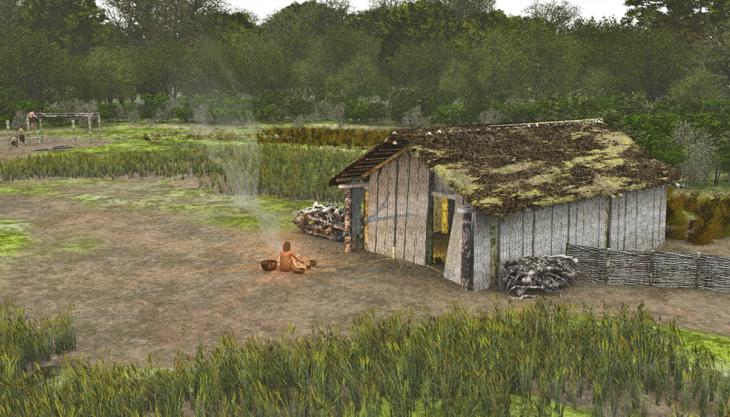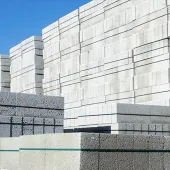Southern England’s first housing development

Four early-Neolithic houses unearthed at CEMEX UK’s Kingsmead Quarry in Berkshire
FOUR early-Neolithic houses (c.3,700BC) have been unearthed by archaeologists at CEMEX UK’s Kingsmead Quarry in Berkshire. The discovery, which is believed to be unprecedented at a single site in England, is said to challenge current understanding of how people lived more than 5,700 years ago.
The rare find will provide a unique opportunity for archaeologists to learn more about the earliest permanent settlements in prehistoric Britain and how such sites developed. At this time new practices were being adopted with people switching lifestyles from hunter-gatherers to settled farmers.
Few houses of this date have been found in England and rarely has more than one been found at a single site. The discoveries by archaeologists from Wessex Archaeology will be key to enhancing the knowledge and understanding of this period nationally, and at a local level will provide more information about the history of the area around the rivers Colne and Thames near Windsor.
‘Unfortunately, only the ground plans have survived as any timber would have rotted away long ago,’ explained Dr Alistair Barclay of Wessex Archaeology.
‘However, we have a good idea of what these structures may have looked like from the many house finds in Ireland, from experimental work reconstructing prehistoric buildings, and from wood-working techniques from timber-built walkways of the same date, such as the Sweet Track, that were found preserved in the peat deposits of the Somerset Levels.
‘These finds add to our knowledge of life in Neolithic times and how buildings at that time were constructed.’
The houses were probably built by pioneer farmers who had moved into the area, bringing with them the knowledge and wood-working skills necessary to construct substantial buildings. The area was ideal for a settlement, being close to the River Colne and with ample woodland nearby.
All the houses were rectangular in shape with the largest measuring 15m x 7m in size. Two were constructed out of upright oak planks set into foundation trenches, while the others were built using wooden posts.
Pottery, flint tools, arrowheads, rubbing stones for grinding corn and charred food remains were recovered from the buildings, confirming the lifestyle of the inhabitants and the approximate age of the houses.
Radiocarbon dating has been used to confirm the age of one of the houses (3,800–3,640BC) and further dates will be obtained for the other buildings later this year.
The excavations are part of CEMEX UK’s £4 million archaeological programme at the site, which has been in operation since 2003.









